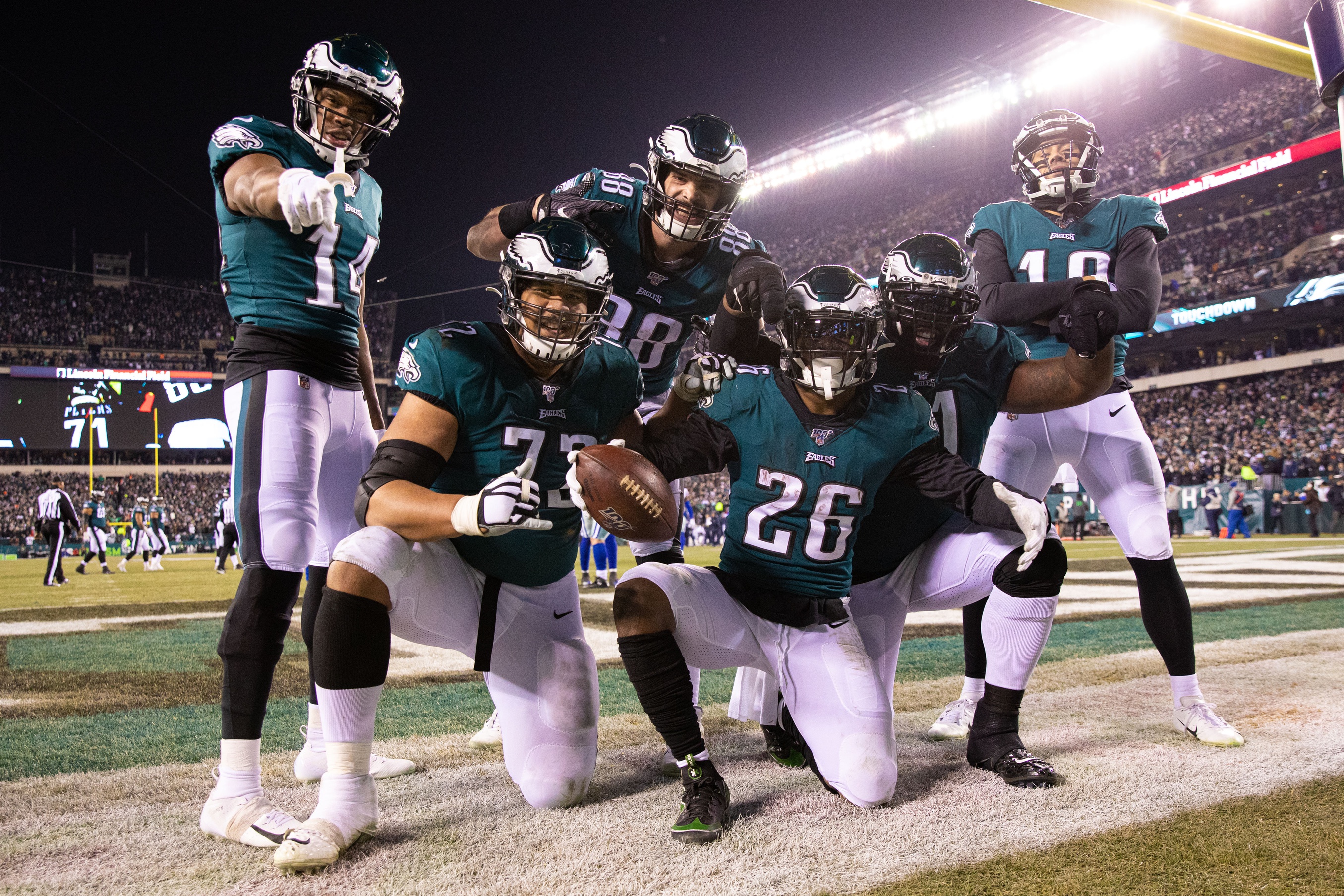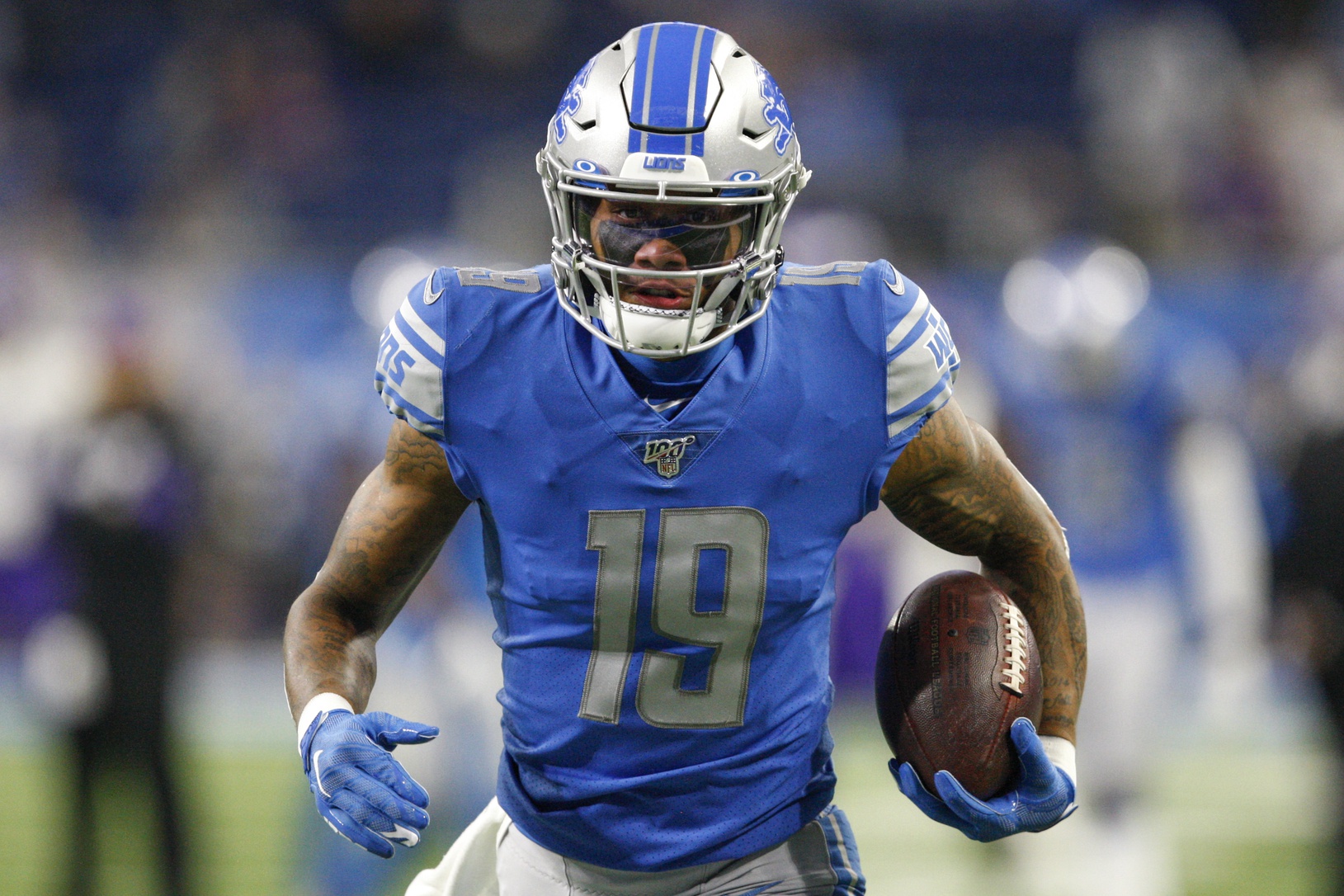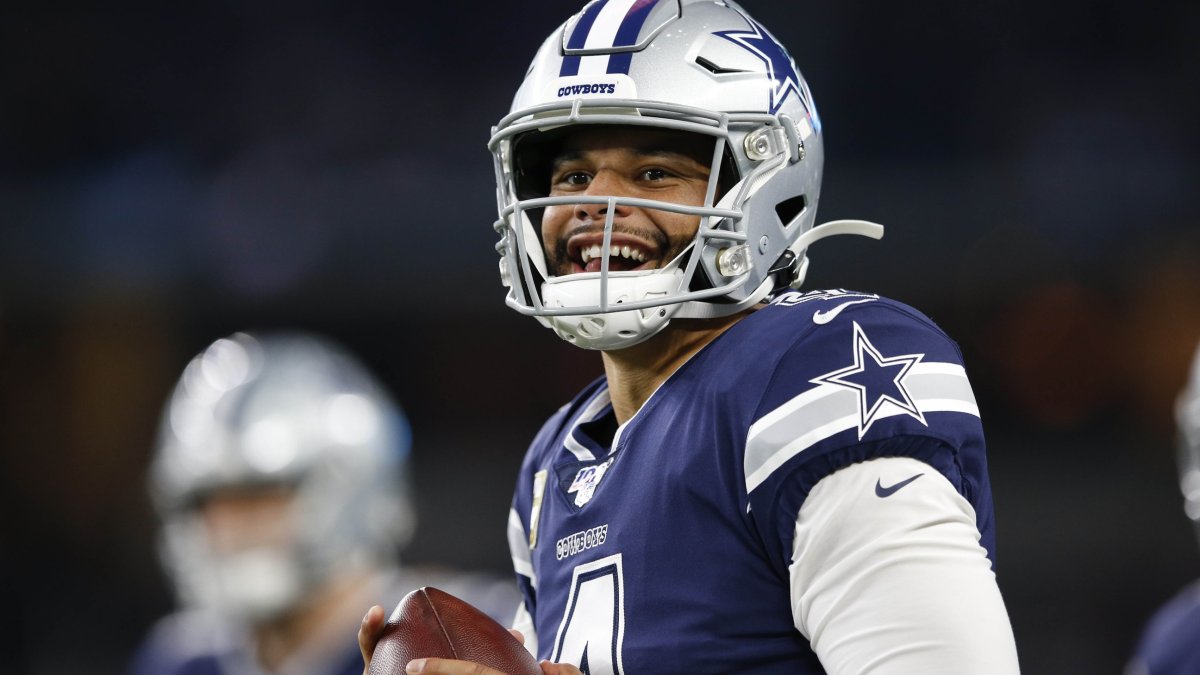The art of buying high in fantasy football can be a powerful strategy — Dalvin Cook and Chris Godwin last year are perfect examples. Both players were relentlessly hyped throughout training camp and had their average draft position (ADP) balloon to the highest point of their careers at RB8 and WR16. The exorbitant draft cost gave many fantasy owners sticker shock, as drafting players at their ADP peak can be nerve-racking.
Subscribe to
Fantasy owners who bought into the hype on Cook and Godwin were handsomely rewarded with the overall RB6 and WR2 — the pair managed to exceed their inflated ADPs, turning out to be values despite what at the time seemed like an overpriced draft cost.
Everybody wants to uncover the next hidden sleeper-turned-superstar, but it is important to remember that league-winning players can also emerge from the early rounds of fantasy drafts.
Here are four hype players with league-winning potential that you should buy-high in fantasy football drafts.
Dak Prescott | PFF Consensus Ranking: QB4
The Cowboys had the NFL’s best offense last season, averaging 6.4 yards per play (first) and 431.5 yards per game (first), which Prescott rode to the QB2 fantasy finish. While Prescott will not sneak up on anyone, he has an underrated ceiling considering the improvements Dallas made this offseason.
The Jason Garrett era is mercifully over with Mike McCarthy taking over the reins of the Cowboys. Garrett was an overly conservative offensive coach and tilted the scheme heavily toward the run. Since 2014 under Garrett, the Cowboys never ranked higher than 20th in pass play rate, including two seasons with the lowest pass play rate in the entire NFL.
Dallas had the sixth-most total offensive plays last season but only the 21st pass-play rate. That will change under Mike McCarthy. From 2015-2018, McCarthy’s Green Bay Packers passed the football on a whopping 67% of plays (most). Prescott’s efficiency will likely regress, but a passing volume spike would improve his total numbers. Additionally, the return of Kellen Moore as the offensive coordinator retains continuity in the offense and allows Prescott to build on his success from last season.
Prescott was wildly efficient in averaging 8.2 yards per attempt (fifth) while tossing 30 touchdowns (fourth) last season. He excelled on the deep ball 20-plus yards downfield with 35 completions (third), 1,157 yards (third) and 11 touchdowns (second). He also has rushing upside, particularly in the red zone where he is due for some positive touchdown regression — Prescott had 14 attempts and three touchdowns in 2019, compared to 19 attempts and six touchdowns in 2018.
Arguably the most exciting reason to draft Prescott is his quartet of elite weapons: Ezekiel Elliott, Amari Cooper, Michael Gallup and CeeDee Lamb. The Cowboys were the fourth highest-graded offense in 2019, and they are going to be even better in 2020. With a top-five offense and electric playmakers at every skill position, Prescott finds himself in an impeccable situation ripe for fantasy goodness.
Yet, Prescott and the three receivers all have reasonable draft costs. It seems like fantasy owners are suffering from decision paralysis when analyzing the Dallas passing attack. Nobody can figure out which receiver to stack with Prescott, so the easy move is to simply avoid altogether. That is the wrong approach. I am targeting Prescott, Cooper, Gallup and Lamb in fantasy drafts everywhere — they are all screaming values at their current ADPs.
Outside of Lamar Jackson or Patrick Mahomes, most fantasy owners are content to wait until the later rounds to grab a quarterback. This leaves Prescott in an awkward tier by himself, but you should not hesitate to scoop him up in the fourth or fifth rounds. Jackson has the wheels and Mahomes is the $503 million-dollar man, but it is Prescott who has the best offensive weapons.
No quarterback has ever finished as the QB1 in back-to-back seasons. Jackson is fighting uphill against history, and Mahomes has a target on his back as the defending Super Bowl champion. Perhaps it is time for Dak to claim the mantle as the overall fantasy QB1.
Here are Prescott’s ADPs from the previous three seasons:
- 2019: QB18
- 2018: QB21
- 2018: QB14
- 2016: QB19
Don't be shy about paying up for the peak of Prescott’s ADP. Projections rank Prescott as the fourth-best QB, and the Cowboys have the seventh-easiest QB strength of schedule in 2020.
Miles Sanders | PFF Consensus Ranking: RB8

The Miles Sanders hype train continues steamrolling with resounding force. Fantasy owners went wild on Monday after Eagles Head Coach Doug Pederson called Sanders “the guy this season.” Coach-speak is one thing, but Philadelphia’s actions this offseason reveal their true thoughts about Sanders — they let Jordan Howard walk and did not bring in any other running backs. Make no mistake, Sanders is the Eagles starting running back and he is in for a monster season.
Sanders’ ADP is currently at RB10 and I've seen him come off the board at the eighth overall pick in multiple recent drafts. That is probably as high as his draft cost is going to get, and I will be scooping up Sanders at that price every chance I can get. In fact, I would be willing to draft Sanders as high as fifth overall — his true ceiling holds legitimate top-three potential.
From Weeks 9-16 last season, Sanders was the PPR RB8, and he scored more fantasy points than Aaron Jones, Alvin Kamara, Joe Mixon and Nick Chubb. From Weeks 11-16 (after Philadelphia’s Week 10 bye), Sanders ranked as the RB3 (behind only Christian McCaffrey and Ezekiel Elliott) while averaging 18.8 fantasy points per game and 20 touches per game. Sanders’ ceiling is not theoretical — he has already demonstrated that he can produce at a top-three running back rate.
Sanders is a talented runner and tough to tackle — he averaged 3.25 rushing yards after contact per attempt in 2019 (ninth). Here is a list of running backs to average the most rushing yards after contact per attempt in their rookie season since 2012 (min. 150 carries):
- Nick Chubb (’18) – 4.47
- Alvin Kamara (’17) – 3.83
- Josh Jacobs (’19) – 3.48
- Saquon Barkley (’18) – 3.34
- Miles Sanders (’19) – 3.25
What separates Sanders from Jacobs and Chubb on the above list, and connects him closer to Barkley and Kamara, is his dynamic receiving ability. Sanders averaged 8.1 receiving yards per target in 2019 (fourth), had 14 catches of 15-plus yards (third) and gained 15-plus yards on 28% of his catches (first). Additionally, he was a threat beyond 20-plus yards downfield with five catches (most), 165 yards (most) and two touchdowns (most).
Sanders is a true dual threat running back who can impact the game both rushing and receiving, making him virtually game-script proof. It boggles the mind to think that he racked up all these incredible stats as a rookie. Imagine what he may have as an encore should he take an expected Year-2 jump.
Sanders has never been a first-round draft pick before, but do not let that stop you from buying him at his peak value. McCaffrey had a RB11 ADP heading into his second season in 2018 as fantasy owners were wary that he could handle a full workload — we all know how that turned out. PFF’s projections rank Sanders as the RB8.
Kenny Golladay | PFF Consensus Ranking: WR7

Golladay is my favorite wide receiver to draft after the second-round running backs come off the board. I have a feeling that this time next year we will be talking about Golladay as a first-tier WR coming off a top-five fantasy finish.
Golladay blossomed into a superstar in his third season with a league-leading 11 touchdowns. The fantasy community has become too sharp to chase touchdowns, but Golladay has the role and skills to support another double-digit touchdown season. He was the NFL’s highest-graded wide receiver on contested catches, hauling in a league-high 26 balls for 429 yards. Golladay had 14 end-zone targets (second-most), where he scored five touchdowns — his 36% end-zone target conversion rate was below the 39% league-average.
The return of a healthy Matthew Stafford is the key to a Golladay eruption, particularly because of the duo’s deep ball connection. Almost a fifth of Stafford’s passes (19.2%) were beyond 20-plus yards downfield last season, the highest rate in the NFL. Nobody balled out deep downfield better than Golladay in 2019: 36 targets (most), 16 catches (most), 628 yards (second), five TDs (second). Big plays are Golladay’s specialty — his 17 catches of 25-plus yards led the league.
It feels like Golladay has already broken out, considering he finished as the WR9 last season. Yet, Golladay still has more room for growth — his career high in targets (115) and catches (70) are still from 2018. Golladay managed that WR9 finish while 58 of his targets were from the world-beating QBs David Blough and Jeff Driskel.
Imagine Golladay’s numbers if he sees 130 targets from a healthy Stafford. I think he would be a surefire top-five wide receiver, and I am drafting him as such.
PFF’s projections are all over Golladay, ranking him as the WR7. The Lions have the second-easiest WR strength of schedule in 2020.
James Conner | PFF Consensus Ranking: RB19

Conner was one of last season’s biggest landmines, wrecking any fantasy team that drafted him at his RB5 ADP as Conner limped to the RB35 fantasy finish. He has now missed a total of nine games in the last two seasons, and fantasy owners are rightly skeptical of using a premium pick on a player who has struggled to stay on the field.
Yet when he is on the field and healthy, Conner is undoubtedly an impact player. He was the RB6 in his breakout 2018 campaign, and even last year managed a serviceable 14.6 fantasy points per game (16th). The Steelers offense was a disaster without Ben Roethlisberger, yet a gimpy Conner still put up mid-range RB2 numbers. Before injuries derailed his season, Conner was the RB9 in Weeks 1-8.
Bell-cow running backs are the golden goose in fantasy football, and Conner is the only one available in the third round. PFF's Ian Hartitz just wrote up why Conner is one of his favorite fantasy football picks this season, highlighting Mike Tomlin’s repeated confirmation that Conner will be Pittsburgh’s featured back in 2020.
The notion of buying high on Conner stems from the fact that he was a fourth and fifth round pick all offseason but has recently seen his ADP climb into the third round. I support the idea of grabbing Conner as early as the late second round if the other running backs in the tier above him are off the board.
It feels strange reaching so far above ADP for a player, but Conner is only going to keep rising up draft boards as the season gets closer. The third round running back landscape gets ugly in a hurry, and Conner is the only one with true bell-cow upside.
PFF’s projections rank Conner as the RB14, which is more in line with where I would recommend drafting him.



 © 2024 PFF - all rights reserved.
© 2024 PFF - all rights reserved.